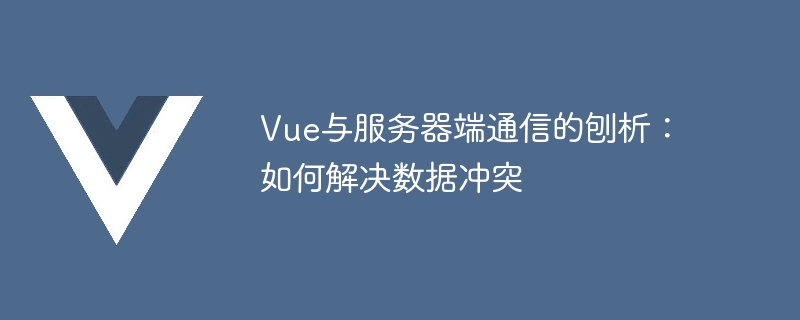

Analysis of Vue and server-side communication: how to resolve data conflicts
In modern web development, Vue has become one of the most popular front-end frameworks. Vue's data-driven and responsive features make it the first choice among developers. However, data conflicts are a very common problem during communication with the server side. This article will explore how to solve the data conflict problem in Vue and server-side communication.
1. Causes of data conflicts
When multiple users modify the same data at the same time and save it to the server, data conflicts may occur. This is because different users obtain different data at different points in time, and then modify and submit it at the same time.
2. Methods to resolve data conflicts
The following is a code example of a simple backend solution:
@app.route('/api/update_data', methods=['POST'])
def update_data():
data_id = request.json.get('id')
new_value = request.json.get('value')
# 获取数据库中的旧数据
old_data = get_data_from_database(data_id)
# 比较新旧数据是否一致
if new_value != old_data['value']:
return {'error': 'Data conflict'}
# 更新数据库中的数据
update_data_in_database(data_id, new_value)
return {'success': True}The following is a code example of a simple front-end solution:
// 获取最新的数据
axios.get('/api/get_data')
.then(response => {
const oldData = response.data;
const newData = this.formData;
// 比较新旧数据是否一致
if (newData.value !== oldData.value) {
// 数据冲突处理逻辑
const confirmResult = confirm('Data conflict, choose to override or merge?');
if (confirmResult) {
// 覆盖旧数据
axios.post('/api/update_data', newData)
.then(response => {
alert('Data updated successfully');
})
.catch(error => {
alert('Failed to update data');
});
} else {
// 合并新旧数据
newData.value = newData.value + ' ' + oldData.value;
axios.post('/api/update_data', newData)
.then(response => {
alert('Data merged successfully');
})
.catch(error => {
alert('Failed to update data');
});
}
} else {
// 数据无冲突,直接提交修改
axios.post('/api/update_data', newData)
.then(response => {
alert('Data updated successfully');
})
.catch(error => {
alert('Failed to update data');
});
}
})
.catch(error => {
alert('Failed to get data');
});3. Summary
Data conflicts are a common problem in Vue and server-side communication, but we There are some ways to solve this problem. Back-end solutions can detect data conflicts in the background and return appropriate error messages, while front-end solutions can let users choose how to handle data conflicts. These methods have their applicable scenarios and can be flexibly selected according to specific circumstances. Through reasonable data conflict resolution, the consistency and correctness of data can be ensured and the user experience can be improved.
The above is the detailed content of Analysis of Vue and server-side communication: how to resolve data conflicts. For more information, please follow other related articles on the PHP Chinese website!